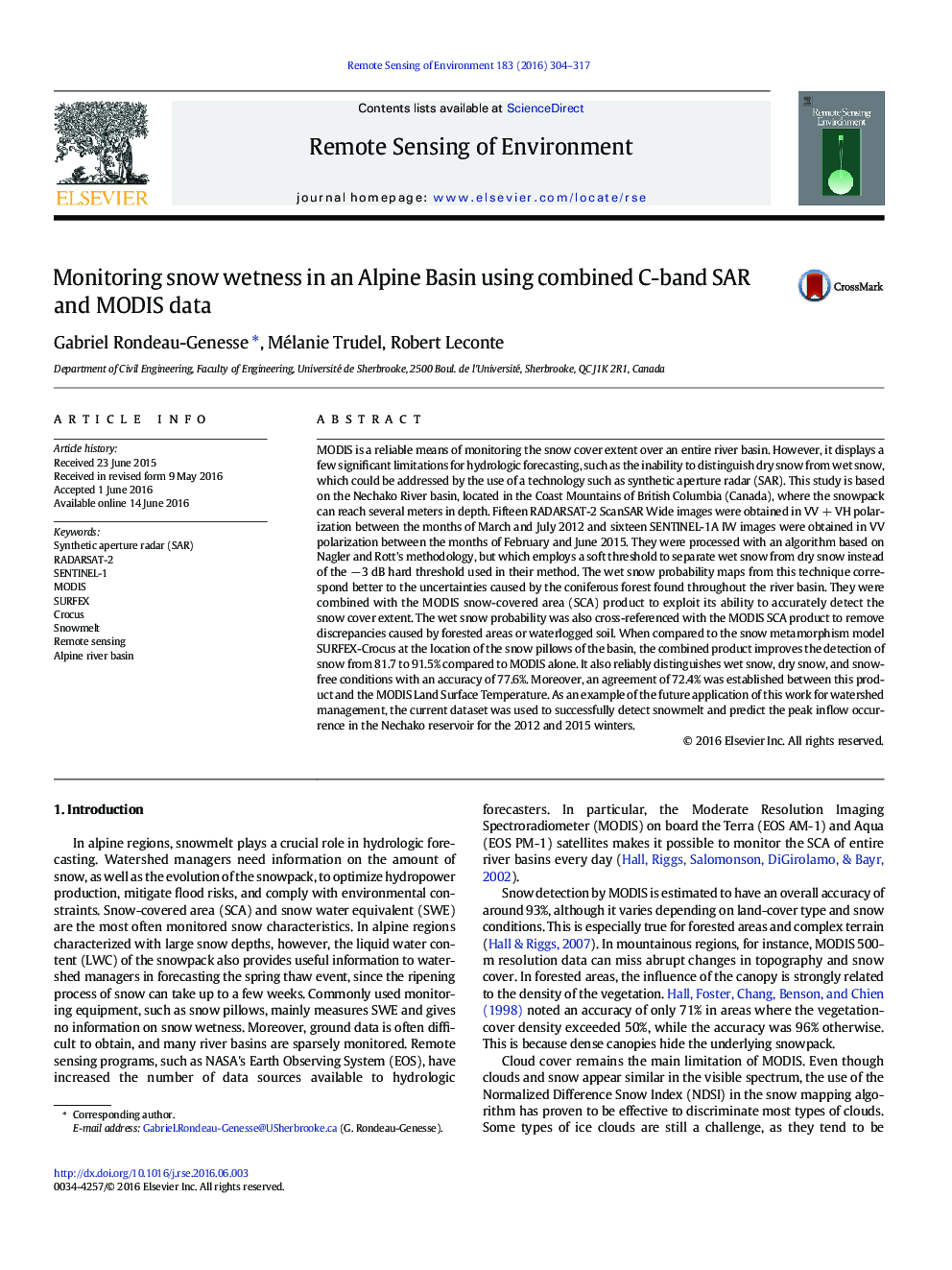| کد مقاله | کد نشریه | سال انتشار | مقاله انگلیسی | نسخه تمام متن |
|---|---|---|---|---|
| 6344973 | 1621217 | 2016 | 14 صفحه PDF | دانلود رایگان |

- Combining C-Band SAR and MODIS enhances snowmelt monitoring in an alpine watershed.
- A soft threshold is used on SAR data to detect wet snow in a coniferous forest.
- Discrepancies from waterlogged soil are eliminated by cross-referencing with MODIS.
- The peak inflow is predicted within an interval of two and a half weeks.
MODIS is a reliable means of monitoring the snow cover extent over an entire river basin. However, it displays a few significant limitations for hydrologic forecasting, such as the inability to distinguish dry snow from wet snow, which could be addressed by the use of a technology such as synthetic aperture radar (SAR). This study is based on the Nechako River basin, located in the Coast Mountains of British Columbia (Canada), where the snowpack can reach several meters in depth. Fifteen RADARSAT-2 ScanSAR Wide images were obtained in VV + VH polarization between the months of March and July 2012 and sixteen SENTINEL-1A IW images were obtained in VV polarization between the months of February and June 2015. They were processed with an algorithm based on Nagler and Rott's methodology, but which employs a soft threshold to separate wet snow from dry snow instead of the â 3 dB hard threshold used in their method. The wet snow probability maps from this technique correspond better to the uncertainties caused by the coniferous forest found throughout the river basin. They were combined with the MODIS snow-covered area (SCA) product to exploit its ability to accurately detect the snow cover extent. The wet snow probability was also cross-referenced with the MODIS SCA product to remove discrepancies caused by forested areas or waterlogged soil. When compared to the snow metamorphism model SURFEX-Crocus at the location of the snow pillows of the basin, the combined product improves the detection of snow from 81.7 to 91.5% compared to MODIS alone. It also reliably distinguishes wet snow, dry snow, and snow-free conditions with an accuracy of 77.6%. Moreover, an agreement of 72.4% was established between this product and the MODIS Land Surface Temperature. As an example of the future application of this work for watershed management, the current dataset was used to successfully detect snowmelt and predict the peak inflow occurrence in the Nechako reservoir for the 2012 and 2015 winters.
Journal: Remote Sensing of Environment - Volume 183, 15 September 2016, Pages 304-317